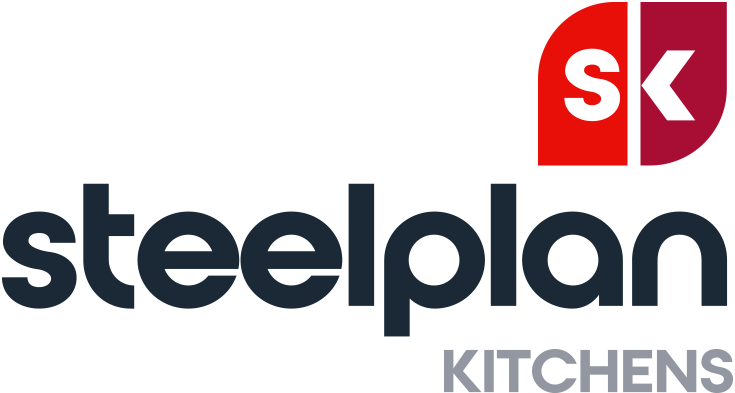Fundraising is important for every church, whether it’s to support charities and the local community, or to contribute to maintenance and large-scale repairs (like fixing the aging roof or restoring your stained-glass back to its former glory). Yet with busy lifestyles affecting the number of worshippers regularly visiting your church, and people feeling the pinch of rising living costs, fundraising isn’t as simple as it once was.
Your kitchen could provide a way to raise funds while giving something back to your congregation and local community – and there are options that are suitable for the circumstances of every church: whether you’re a thriving urban community centre or a small rural church run largely by volunteers.
In this guide, we’ll show you some ways you can use your kitchen to raise funds and how to make sure that your kitchen is ready for the task.
RENT IT OUT AS A FOOD PREPARATION SPACE
Space is at a premium (especially in urban environments) and there can be very high demand for well-equipped facilities for cottage food manufacturers. If your kitchen fits that description, you could be generating revenue with it.
A semi-commercial kitchen has surfaces and equipment that can accommodate a variety of uses: who might want to use yours will depend on your layout and equipment. Realistically, it will be something on a fairly small scale: for example, a member of the local community may want to start an online bakery business or sell their homemade jam. Their flat or house is impractical, so they need to base themselves somewhere else to create their goods.
When it comes to terms, you can negotiate a suitable arrangement, based on the time required. Monthly payment up front would probably be the most practical and lowest risk to you, but you’re of course free to agree anything mutually convenient. In the bakery example, that might be something more ad hoc, or even a percentage of revenue.
Whatever you agree, it’s vitally important that you put it in writing, and that both parties sign that contract before any usage takes place. That way, all obligations on both sides are clear, which will reduce the chance of disputes, and make any disagreements easier to resolve, should they arise. You will need a clear process agreed by all of your relevant team members, and by whoever rents your kitchen. That should cover things like:
- Access will you issue keys, keep them in a safebox, or will someone from the team always be onsite to let the renter in?
- Obligations what have you promised to provide?
- Responsibilities does your renter have to clear and clean the kitchen? Is it for them to lock up when they leave? If they cause any damage to the kitchen or equipment, is it their responsibility to pay for repairs or replacements?
If you find yourself with more than one party renting your kitchen space, you’ll need to ensure you have a clear schedule that all the team are aware of, and when offering time slots, consider matters like turnaround time — how long it will take for one party to clean and vacate the kitchen — so that the next booking doesn’t lose time if their slot is soon afterwards.
You’re unlikely to be so busy with bookings that two independent renters will use it at once, but if for any reason you were to consider that, be sure to:
- Assess usage — will the two need the same facilities, or can they function without competing for resources? Is there space for the two?
- Be transparent and ensure all parties are happy to share the space
- Define each user’s obligations to the other, as well as to you, their host
Takeaway: With a durable kitchen, renting to small businesses can be a regular source of income, and help you create strong connections in the local community.

OFFER CHEAP OR ‘PAY WHAT YOU CAN’ LUNCHES
Particularly suited to areas with high student populations, initiatives like this require careful attention to margins, but under the right conditions can be a good way to bring some good to the community while generating funds for your church.
With a few volunteers, prepare rolls with some economical fillings, fill some urns with tea and coffee, and some jugs with squash, and invite visitors to lunch. You can either offer it as a ‘pay what you can’ lunch with a suggested donation, or as fixed price (but inexpensive) meal.
These lunches serve a dual purpose, since they can generate revenue as well as forming part of your community outreach.
There are a few challenges when it comes to the viability of a scheme like this, so you’ll need to address the following:
Anticipating demand
At the start, it might be difficult to know what kind of take-up to expect, and therefore how much of everything to buy.
From an economic and a waste reduction point of view, it’s better for demand to exceed supply, so be restrained in what you buy. If on the first few occasions you find yourself with more mouths than you can feed, then it makes sense to start buying more supplies.
It’s realistic that as the lunch becomes more established, it’ll increase in popularity, but it’ll be easy to tell if you need to start catering for more.
Cost of goods and margins
Running an inexpensive or a ‘pay what you can’ lunch naturally squeezes your profits. Since you’ll buy in bulk, you should be able to get better value on the food and drink. Even better, you may be able to agree an even more favourable rate with a local bakery if you have a contact, an existing relationship, or simply a charming negotiator on your team.
If your volunteers are willing to chip in with ingredients (as well as time), you can use the kitchen to bake cookies, or brownies, which could add to the appeal of the lunch and increase your revenue.
Second helpings
Ideally, this won’t be a problem, but you might need to make it clear that the lunch is not an all you can eat buffet. A simple sign specifying, for example, “£2 for a sandwich, tea, and brownie” should discourage anyone from abusing the system. For the most part, you can count on people to be honest, but do keep an eye out in case anyone tries their luck.
Payment methods
The move to a cashless society was only accelerated by the pandemic, and many people expect to be able to use contactless methods just about anywhere. Fortunately, card readers are inexpensive, and they’ll help you serve more ‘customers’ — many people simply don’t carry cash these days, especially younger people.
OPEN A CAFÉ
If your church has a well-equipped kitchen and the space for some tables and chairs, then you might be able to run a small café.
Like the lunch initiative above, this has an outreach benefit as well as a revenue-generating one. The café can be a social hub for those who might otherwise be lonely, or reluctant to leave their homes. It can also attract people to the church who have never visited before.
Unlike the ‘pay what you can’ lunch, a café has a more traditional revenue generation model. Here’s what you need to plan for.
Menu
Tea and coffee go without saying, but you should carefully consider your supplier. Selling hot drinks to a wider audience may require a better-quality product. The public are used to barista-level coffee, and you’re competing with high-street chains. There are also ethical considerations. As a church, you may feel a duty and expectation to serve fairly-traded products, which can come at a premium.
As mentioned above, wholesale prices will help you keep your overall costs down.
Other drinks require some thought too. For example, if you sell orange juice, will you buy it or make it? Making it requires a juicing machine and a lot of oranges, but freshly squeezed juice could be much more appealing (and it’ll reduce the amount of plastic waste you produce).
When it comes to food, what do your kitchen facilities and team skills permit? Does your kitchen provide a clean, safe space for commercial food preparation? Can you bake brownies, cakes, and cookies? Are you able to make sandwiches of saleable quality?
Staffing
Can you prepare enough food and drink, and keep the café manned, purely with volunteers? If not, you may have to hire staff. Bear in mind that that will eat into your margin, and the church will have obligations as an employer that will demand extra time and attention. You’ll probably find it makes more sense to establish the availability of your volunteers, then choose the café’s opening hours accordingly.
Local Authority
Since you have a food business, you must register it with the local authority 28 days before starting to trade. You might be visited by health inspectors, so ensure that your hygiene is beyond reproach. A semi-commercial kitchen will make that goal easy. Steel, unlike MDF or wood, doesn’t contain any material to encourage, sustain, or harbour insects or bacteria, and a powder-coated finish makes keeping it clean, safe and free from bugs easy.
OFFER CHEAP OR ‘PAY WHAT YOU CAN’ LUNCHES
Bake products to sell
If on-site catering is impractical, you could still sell ‘homemade’ goods through a small post-service shop or stall, if you have one, or if you’d like to start one.
Once again, someone on your team might have a reputation for their culinary creations, or they might be hiding their light under a bushel. Your kitchen can be the perfect place for them to unleash their creativity. Something simple like jam is always popular, and when you have the right equipment and space at your disposal, it’s easy to increase the scale of production.
You can also create your own ‘brand’. All it takes is some labels with your own design to place on jars, or whatever you might sell. Small touches like that add a certain charm that make a purchase even more appealing.
The same applies to drinks you could make, like lemonade or cordials. There’ll be some outlay for ingredients, of course, plus stickers, jars, bottles, or whatever vessels you’ll need, but if you start small you won’t have to commit to too much expenditure. Test the waters and see if people buy what you have on offer, then you can scale up appropriately.
The ‘story’ of your goods having been made there in the church’s own kitchen will hold an extra appeal for your visitors, as local goods are very popular among an increasingly environmentally conscious public.
As before, you will have to register as food business, if you haven’t already. That’s purely a matter of notifying the local authority, so nothing too onerous.
Is your kitchen up to the task?
Of course, in order to produce the right quantity of goods, and ones that are worthy of selling, or opening your kitchen up for the use of paying guests, you’ll need a kitchen that’s hygienic, well equipped, and user-friendly.
Before you move forward with any of your plans, take a moment to carry out a kitchen facilities audit. Start by looking at the kitchen and asking some basic questions:
- When was the kitchen last renovated?
- What is it made of? MDF, wood, stainless steel, laminate?
- How frequently is it currently used?
- Are cabinet doors starting to look faded, cracked or damaged?
- Do countertops have cracks, crevices or seams that can harbour bacteria?
- Do walls and floors have any obvious safety issues: loose tiles, peeling paint, damp?
- Are facilities easy to use and accessible?
If your kitchen is looking a little worse for wear – or simply doesn’t appear up to the task – a semi-commercial kitchen can be a good investment to help you generate funds in the long-term. A semi-commercial kitchen, manufactured in powder-coated steel, ensures that your kitchen is durable and will stand up to heavy usage. It’s also safer for heavier, more frequent use, as the body of the kitchen is fire-resistant. Powder-coated finishes mean that surfaces are easy to clean, and that you can easily meet the requirements of health authorities.
While a semi-commercial kitchen is of a much higher specification than a domestic kitchen, its appearance is familiar and accessible; unlike a fully commercial design, it won’t be intimidating or difficult to use for volunteers, renters or employees. If you are looking to install a semi-commercial kitchen, make sure that it is powder-coated steel you are getting: there are MDF and chipboard manufacturers that pose as semi-commercial kitchen providers, but their kitchens won’t last as long (or conform to the same health and safety standards).
If you would like some expert advice on designing a kitchen that can help you raise funds or maintain a steady stream of revenue, get in touch today by calling 0844 809 9186, or sending an email to [email protected].





